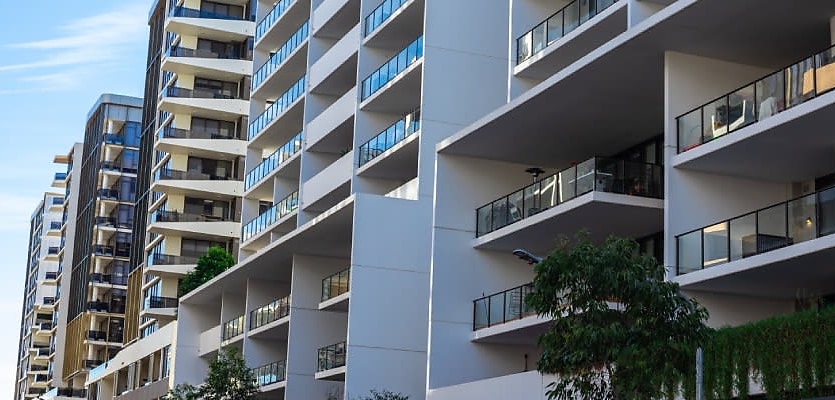While units have been more “resilient” to price falls, compared to houses, the latest data reveals the downswing has kicked in.
Since peaking in April, CoreLogic’s national unit index has decreased by 2.3 per cent, with values declining by approximately $14,400 over the past four months, which followed a 0.3 per cent rise in March.
As interest rates continue to rise and cost of living pinches Australian borrowers, property prices are expected to fall up to 20 per cent by the end of 2024.
However, while national house prices have fallen around 5 per cent since April–September units have been fairly resilient to price falls, so far.
But the decline in unit prices is beginning to take hold. Similar to house price values, units in capital cities have recorded a larger decline in unit values relative to the regional areas, falling 2.7 per cent or around $17,500 since April.
Indeed, as regional units are more affordable, approximately $110,000 below the capitals, they have been somewhat more resilient to the price value declines, around 1.3 per cent since its peak in June, compared to 2.5 per cent for the capitals.
CoreLogic data showed unit values in capital cities fell 0.9 per cent in August, which outpaced the decline seen at the onset of the global financial crisis (GFC).
Despite the current decline being the fastest on record, CoreLogic’s economist Kaytlin Ezzy said it was important to remember the “context” of the past two years.
“While capital city unit values are just 0.5 per cent higher than this time last year, they are still 7.7 per cent above pre-COVID levels,” she said.
Units in capital cities fall harder
Looking across the individual capitals, Hobart and Sydney recorded the largest monthly declines in unit values, in August, falling 1.7 per cent and 1.5 per cent respectively, while values across Melbourne declined by 0.6 per cent.
The total drop in unit values seen has seen Sydney’s (-2.5 per cent) and Melbourne’s (-0.6 per cent) annual trend fall into negative territory for the first time since February 2021.
Units in Brisbane also fell 0.2 per cent, but marked a 13.9 per cent increase over the past 12 months.
Going against the trend was Adelaide (1.1 per cent), Perth (0.4 per cent) and Darwin up 0.6 per cent, taking their average unit up for the year to 16.6 per cent, 2.7 per cent and 7.9 per cent, respectively.
Regionally, Tasmania saw the biggest falls in unit prices for the month of August down 4.4 per cent, but remained up by 11.2 per cent for the past 12 months.
South Australia dropped 1.8 per cent, marking a modest 3.2 per cent rise for the past 12 months, while regional Queensland dropped 1.2 per cent on its 16.6 per cent rise over the year.
Regional NSW fell 1 per cent (up 9.6 per cent for the year) and Victoria saw a 0.3 per cent drop, which saw its unit values mark a 9.3 per cent increase for the year.
Western Australia was the only regional town that saw a slight increase in unit values for the past month up 0.2 per cent, taking its annual change in value up 6 per cent.







You are not authorised to post comments.
Comments will undergo moderation before they get published.